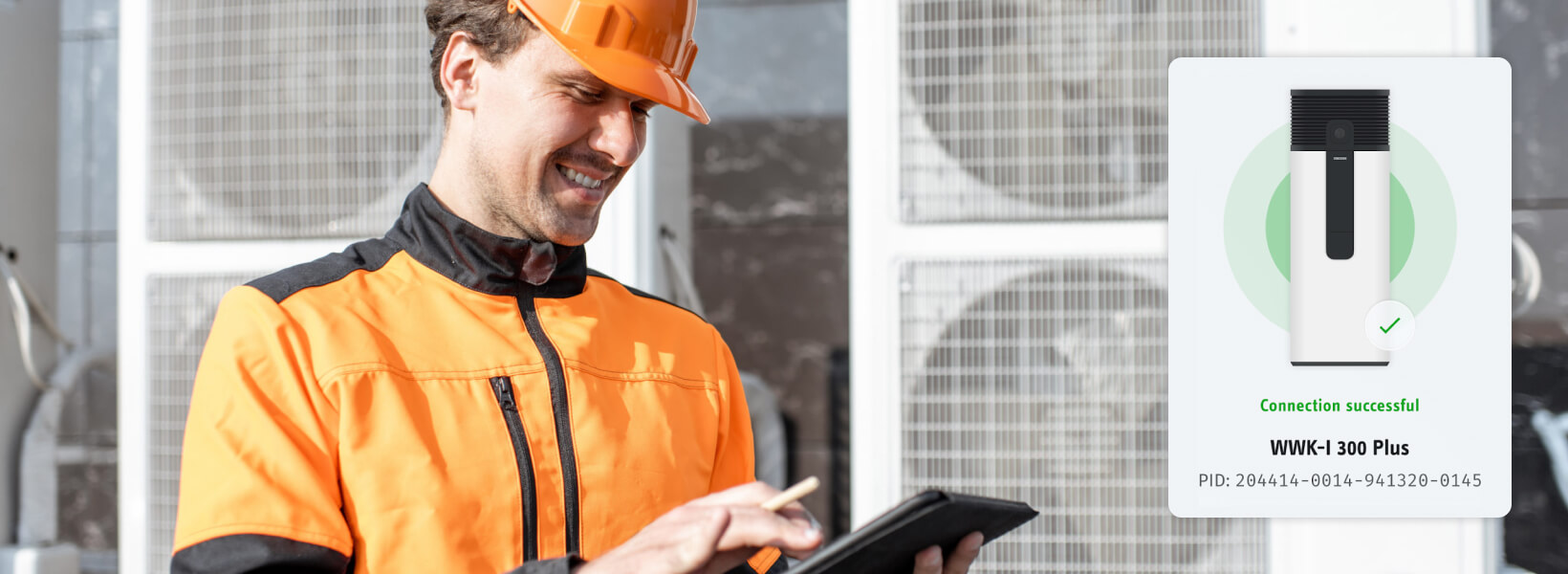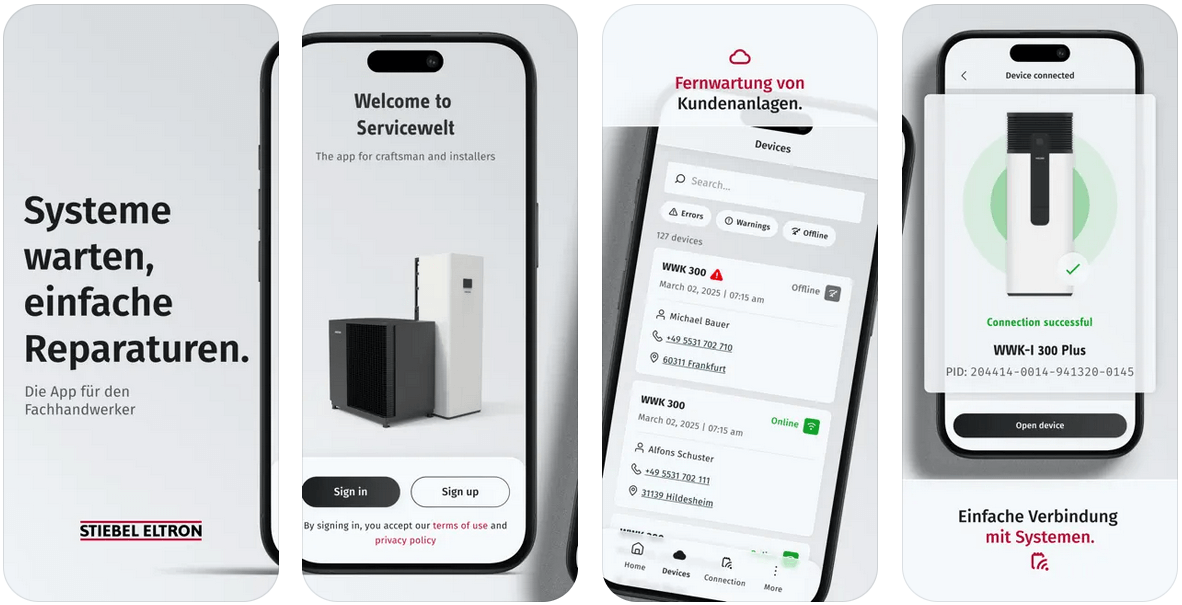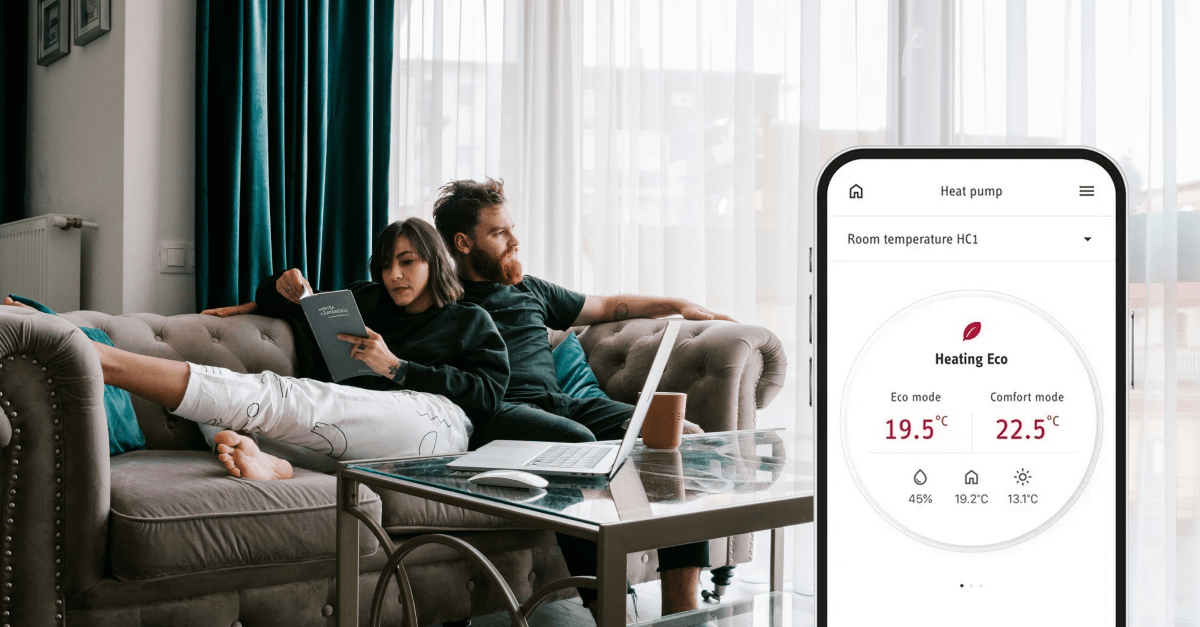Empowering Stiebel Eltron’s installer network to work faster and smarter
Servicewelt app gives Stiebel Eltron’s installers and service partners a practical on-site tool for guided device setup, commissioning, and troubleshooting – speeding up installations, reducing errors, and building a foundation for service growth across the partner network.

Adapting service tools for advanced device design
Stiebel Eltron’s latest heating, ventilation, and hot water units reflect a broader trend in the industry: moving toward streamlined physical controls and more intelligent, connected systems. While this design supports product reliability and cost-effectiveness, it increases the need for modern, intuitive digital tools in the field.
To continue supporting their installer network with efficient setup and troubleshooting, Stiebel Eltron sought a robust, user-friendly mobile app that gives technicians direct access to advanced configuration and diagnostics – making installation and service work simpler, faster, and ready for future growth.
Proekspert’s role: building on proven digital foundations for Stiebel Eltron’s service network
Stiebel Eltron tasked us to develop Servicewelt app – a modern mobile app enabling installers and service partners to configure, commission, and troubleshoot devices with minimal hardware interfaces, directly on-site.
How we delivered:
- Leveraged the tested, scalable backend, communication protocols, and security architecture from our MyStiebel homeowner app project.
- Reused core components for device connectivity, configuration management, and secure user access – eliminating duplicate engineering work and reducing risk.
- Focused development on building a technician-centered user interface and robust on-site workflows, so the field user experience matched the unique needs of installers and service teams.
Delivered features and impact:
- Local, cloud-independent device management for fast installs and flexible troubleshooting
- Access to real-time device lists and locations, integrated with the Stiebel Eltron cloud
- Immediate diagnostics, manual access, and service history – fully mobile, always up to date
- Platform is extensible and ready for additional device types and new product launches
By reusing the high-quality technical foundation from MyStiebel, we brought Servicewelt app to market significantly faster, with lower cost and higher quality.
This enabled Stiebel Eltron to:
- Scale their field service tools for partners and technicians
- Reduce onboarding time and complexity
- Maintain consistent security and reliability across their mobile apps
The app supports Stiebel Eltron’s strategy to drive product innovation and keep their partner network competitive – with digital tools that evolve as the product portfolio grows.

Solid foundation for smarter field support
Servicewelt app marks a step-change in Stiebel Eltron’s service capabilities, moving beyond hardware-only interfaces to mobile-first workflows for installers and field technicians.
While adoption is still at an early stage and user numbers are limited today, the solution delivers the right foundation for scaling digital support as product complexity and market demands grow.
What’s improved & why it matters:
- Technicians get direct, on-site access to detailed diagnostics and guided commissioning – removing frustration and making setup work faster and more consistent
- Error codes, service history, and key device parameters are available instantly through a modern mobile UI
- Built-in integration with cloud device lists prepares the service network for centralized management and future feature updates
- The technical architecture is designed to scale – ready to support new device types and expanding service teams
Impact for the client’s organization
Servicewelt app lays the groundwork for smarter, scalable field support – helping Stiebel Eltron and its partner network deliver faster installs, cut operational headaches, and stay ahead as products evolve.
- Field service costs drop as streamlined workflows minimize repeat visits and reduce time spent onsite.
- Faster response and better device uptime are achieved with instant access to diagnostics and service history, resulting in quicker fixes, happier customers, and stronger channel reputation.
- The scalable platform allows easy integration of new product lines, empowering partners and supporting future business growth.
Client
Stiebel Eltron is a leading global supplier of high-efficiency products and services for heating, cooling, ventilation, and hot water. Headquartered in Holzminden, Germany, the family-owned company employs more than 5,000 people and serves customers in over 120 countries. With nearly 100 years of expertise, Stiebel Eltron drives the energy transition by powering all products with renewable electricity and a commitment to innovation and comfort.
Technologies
Native Mobile apps: Swift for iOS and Kotlin for Android. REST APIs, Websocket, JSON-RPC 2.0 protocol, SSDP and mDNS protocol
Related case studies
Our case studies give an insight into how human-oriented design principles will help product companies persuade customers to go on a journey with smart, connected products.
Share your challenge with us
Thank You!
Your message has been sent. Our team will get back to you as soon as possible!








